 Open Access
Open Access
ARTICLE
Energy Efficient Load Balancing and Routing Using Multi-Objective Based Algorithm in WSN
1 Department of Electronics & Communication Engineering, Govt. Mahila Engineering College, Ajmer, Rajasthan, India
2 Department of Electronics & Communication Engineering, Govt. Engineering College, Ajmer, India
* Corresponding Author: Hemant Kumar Vijayvergia. Email:
Intelligent Automation & Soft Computing 2023, 35(3), 3227-3239. https://doi.org/10.32604/iasc.2023.031357
Received 15 April 2022; Accepted 25 May 2022; Issue published 17 August 2022
Abstract
In wireless sensor network (WSN), the gateways which are placed far away from the base station (BS) forward the collected data to the BS through the gateways which are nearer to the BS. This leads to more energy consumption because the gateways nearer to the BS manages heavy traffic load. So, to overcome this issue, loads around the gateways are to be balanced by presenting energy efficient clustering approach. Besides, to enhance the lifetime of the network, optimal routing path is to be established between the source node and BS. For energy efficient load balancing and routing, multi objective based beetle swarm optimization (BSO) algorithm is presented in this paper. Using this algorithm, optimal clustering and routing are performed depend on the objective functions routing fitness and clustering fitness. This approach leads to decrease the power consumption. Simulation results show that the performance of the proposed BSO based clustering and routing scheme attains better results than that of the existing algorithms in terms of energy consumption, delivery ratio, throughput and network lifetime. Namely, the proposed scheme increases throughput to 72% and network lifetime to 37% as well as it reduces delay to 37% than the existing optimization algorithms based clustering and routing schemes.Keywords
WSNs should refer to a group or network that is in a state of sensing [1,2]. Various equipments which installed in the network are referred as the sensor nodes (SNs) [3,4]. The SNs collect information from the environment and access through an intermediate gateway or directly to the BS via wireless connections. WSNs are used for environmental surveillance and surveillance of national border. Reference [5] The policy in which every SN transfers data directly to the BS leads to a communication transfer. To change this, the SNs are clustered into separate clusters. One node in each cluster belongs to the intermediate contact station between the SNs and the BS equipment. The sensor button that becomes the mode switch is called the cluster head (CH). CH collects information of SNs inside Cluster and forwards the collected data to the BS. WSN networks following this strategy are known as cluster connected WSNs.
Gateway is the one of the major strategies to lessen communication efforts [6,7]. The gate is a equipment with a relatively large insulating battery that acts like a CH [8,9]. Use of the gateway inhibits fast loss of electric power through CH. BS Ports installed at a remote distance sends data to its nearby BS Gateway. Thus, holes near the BS carry more traffic loads and consume more of their energy quickly [10]. If there is a power gap around the BS station, the network is disconnected and BS loses the connection to the remote gate. This increases the need of load balancing management [11–18] to avoid the power consumption problem and increase network life. To address these problems, it is necessary to present the circuit diagrams in this article to clusters and redirect custom-enabled nodes.
The contribution of the work is as presented below:
• In this article, a multi-objective based Beetle Swarm Optimization algorithm (BSO) is broached for energy efficient clustering and routing.
• The modal consists of two objective functions. The first objective is framed to elude the problem of energy efficiency by balancing the load while the second objective is designed to conserve the network overall energy. The proposed BSO technique presents enhanced performance under both equal and unbalanced load conditions at the SN.
• In the final state, total energy consumption is minimized that further succeed optimal route between the BS and its gateway. The cluster fitness function is selected so that the gateway belongs to a different number of SNs in relation to the BS. The final elucidation reduces the consumption of energy of the gateway and SNs
• The performance of the suggested method is investigated on power consumption, network lifetime, power ratio and performance.
Further the article is structured as follows. Section 2 denotes the in depth literature review based on clustering and routing in WSN while Section 3 proposes a multi-objective BSO algorithm for WSN considering energy efficient nodes clustering and routing. Moreover, in Section 4, the results are presented and studied
This section presents survey on prominent literature which focused research on clustering and routing clustering and Routing in WSN. Raj et al. [19] had proposed the lifetime of study system has been endorsed by deploying the opportunistic energy-efficient routing with load balancing (OE2-LB) technique which curtails the data collection delays as well as elude routing loops with efficient way for the smart wearable patches. Further efficacy of the system has been evaluated in terms of network lifetime, error metrics, delay, Energy efficiency and network throughput.
Bhardwaj et al. [20] had presented the vitality mindful steering is done dependent on the suggested Multi-objective fragmentary molecule lion calculation (MOFPL). This MOFPL determines the ideal cluster head from different cluster head nodes existing in the WSN. At that point the ideal directing way is set up dependent on the presented multi-objective capacity. This MOFPL calculation has suggested 05, 08 and 10 as active nodes at the emphasis round of 2000 for the WSN along with 50, 75, and 100 nodes, individually. Likewise, this MOFPL calculation has accomplished advanced standardized system vitality of 0.05877 and 0.06022 for the WSN with 50 and 100 nodes, individually .in the network.
Hidoussi et al. [21] had proposed a new convention for cluster-based WSN i.e., Power Efficient and Adaptive Latency (PEAL). The reproduction results determine from PEAL has enhance the system lifetime by 47% contrasted with the exemplary convention Low-Energy Adaptive Clustering Hierarchy (LEACH) and presents a worthy transmission latency contrasted with the vitality protection gain.
Istwal et al. [22] had aimed to decrease the vitality utilization and to incrase the lifetime of the system along with throughput in WSN. From the reproduction executed it is analysed that the strength time of DCHRP4 overhaul to 56.11% over upgraded limit sensitive stable election protocol (ETSSEP) and two times and more than three times over edge sensitive stable election protocol (TSEP) and stable election protocol (SEP) individually. The comprehensive lifetime of DCHRP4 likewise update by 8.29% and 49.22% over ETSSEP and TSEP individually while about three times in examination along with SEP. This improves throughput by 7.75% over ETSSEP, two times over TSEP and SEP separately.
Morsy et al. [23] had proposed a procedure of CH selection is planned as single-target advancement issue to find ideal arrangement of CHs to shape, one-bounce bunches, so as to adjust vitality utilization, upgrade scalability and stability utilizing gravitational search algorithm (GSA). This issue is tackled utilizing molecule swarm streamlining and GSA and thinks about the outcome against LEACH convention. A few re-enactments have been done to exhibit the efficacy of the suggested algorithm under various spots for BS. Moreover, new cost work has been suggested for Hierarchical Clustering. The goal of hierarchical clustering to build organize lifetime and drag out system stability, a few re-enactments is done to think about the efficacy of multi-bounce vs. one-hop approach.
Yarinezhad et al. [24] had proposed an estimate algorithm to take care of this issue with a guess proportion of 1.1. This algorithm executes on fixed-parameter defined time limit. We utilize a virtual lattice foundation in the system that strengthens the algorithm pragmatic for huge scope WSNs. Further, additionally a routing algorithm is proposed that depends on the structure. This algorithm diminishes and stables the vitality utilization in the system by seeking appropriate paths among cluster head and relative sink. The re-enactment results reflect that the suggested algorithm is pragmatic for enormous scope WSNs notwithstanding having a superior exhibition contrasted and other comparative algorithms.
Hao et al. [25] had proposed the surmised ideal arrangement of the issue is achieved by deploying the wolf pack algorithm (WPA) that enhanced the strategic capacity and duty flight, at that point a diversified networking technique dependent on the upgraded wolf pack algorithm (LWPA) is suggested. Also, so as to take care of the issue of predefined way in LWPA networking algorithm, the idea of edge degree is acquainted with advance DEEC algorithm. The improved DEEC algorithm (IDEEC) is utilized to progressively bunch normal node in diversified systems, and the mode of transmission of information is done after the clustering mode set. At last, through re-enactment examination, contrasted and another three heterogeneous network routing algorithms, CLWPA algorithm successfully delays the network steady period and lifetime, and the vitality utilization is more stable.
Lipare et al. [26] had proposed, to apply the Gray Wolf Optimization (GWO) approach for vitality proficient clustering and directing in WSN. Further two new wellness capacities for clustering and steering issues. The wellness work for steering is figured with the end goal that general separation traversal and number of bounces are limited. The wellness work for clustering conveys the general burden as indicated by the separation of entryways to the BS. The implemented GWO-based methodology come about along with advanced estimations of both clustering and steering wellness works when contrasted with the current calculations, to be specific, hereditary calculation, multi-objective fuzzy clustering and molecule swarm optimization.
3 Energy Efficient Nodes Clustering and Routing in WSN
Optimal and feasible load balancing and routing are suggested in WSN for improvement in energy efficiency and network lifetime. Further an optimal path is elected from gateway to BS by deploying BSO algorithms with the aim of energy effective routing. For achieving the aforementioned multi objective BSO is deployed for the frame modal. This will further helps in minimizing the overall energy consumption in the steady network. For load balancing, the BSO algorithm uses a clustering format function and selects the solution such that gateways nearby to the BS are given a relatively lesser SNs and gateways outside. More SNs are assigned from the BS. The obtained result reduces the consumed power of the gateway and SNs to increase network life.
Further Fig. 1 demonstrates the network modal of WSN. This modal consists of four clusters along with a single BS where individual cluster has a gateway (G) and cluster variables respectively. As presented in the figure the stated cluster variables are well connected with the corresponding gateways for every cluster. Further Fig. 2 denotes the modal of load balancing gateway for WSN arranged systematically. This can be studied from Fig. 2 that the gateways i.e., G1 to G4 corresponding four heterogeneous clusters. From this figure it can be comfortably analysed that seven SNs are linked with G1, further two SNs are available in G2 while three in G3 and four in G4 respectively. So G1 has more load compared to its adjacent gateways. Consequently energy drained G1 is greater than adjacent gateways. This can be concluded that lifespan of G1 has reduced due to its high energy consumption. This results in poor network performance and reduced overall network life. So if G1 breakdowns G2 will share the load as presented on right half of the Fig. 2. This is to be noted that this may result premature failure of G2, 3 and G4.
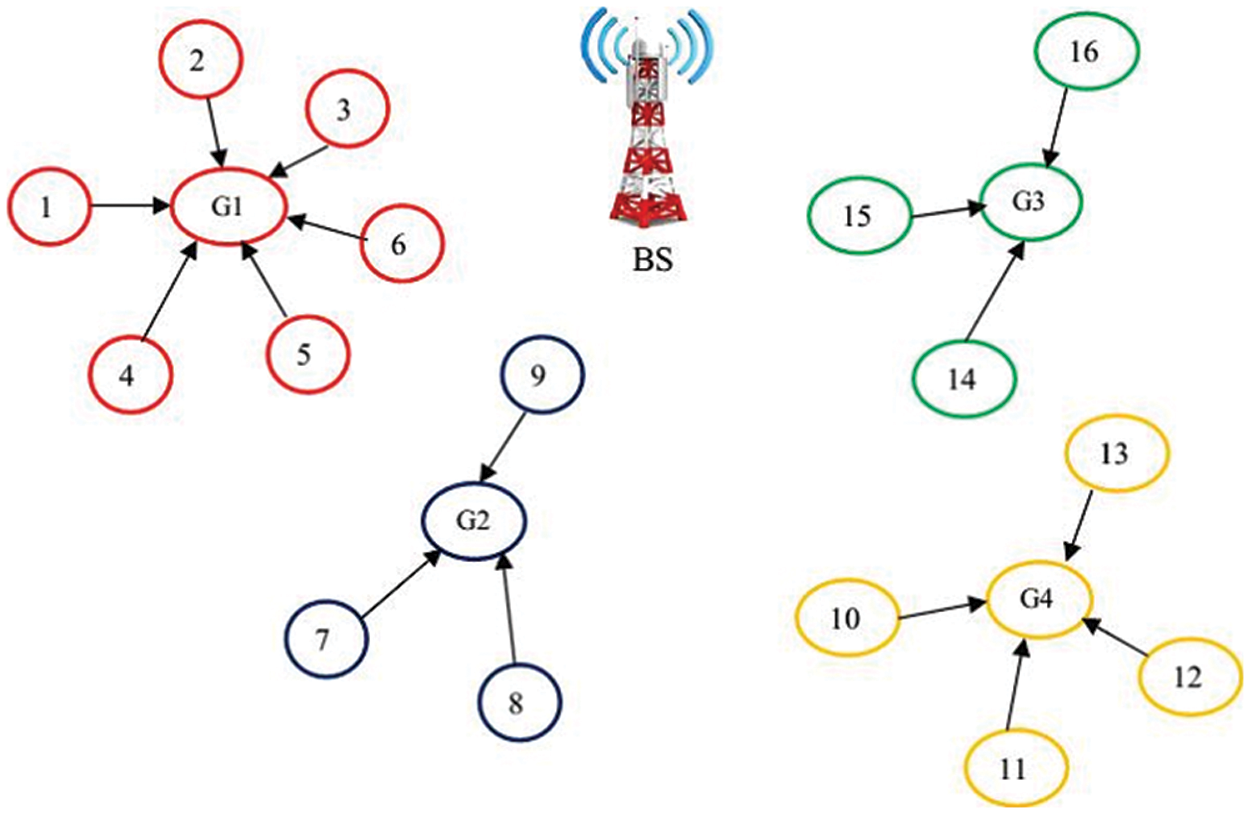
Figure 1: System model of WSN

Figure 2: Balancing of network load within WSN
3.3 Energy Efficient Routing Using BSO Algorithm
For efficient load balancing and clustering, beetle swarm optimization (BSO) algorithm is presented in this paper.A meta-heuristic optimization algorithm dependent on the food searching behavior of long-horned beetles was proposed by Jiang X. Like genetic algorithms, particle swarm algorithms, and so forth. Beetle Antennae Search (BAS) algorithm can naturally understand the process of optimization without knowing the particular type of the function and gradient information. The presentation of the BAS algorithm in managing high-dimensional capacities isn’t agreeable, and the iterative outcome is extremely reliant on the underlying situation of the beetle. As it were, the decision of initial position incredibly influences the efficiency and optimization effectiveness. Inspired by the swarm optimization algorithm, further enhancements to the BAS algorithm have been made by extending an individual to a group. That is the beetle swarm optimization (BSO) algorithm was presented.
Initialization: Each decision or beetle is in the form of a route using one G to other or BS. The solution size is matched with the overall gateways (T). It gives access to the operating system by every gateway via network gateways followed. Every gateway begins with a arbitrary number
where
Calculation for fitness: As the solutions are initialized, value of fitness will be calculated for every result. The routing fitness will be indicated to create effective routes from every gateway to the BS. Using least number of hops and minimum distance the routing path will be selected. The fitness of routing is evaluated as follows: The fitness of routing is evaluated as follows:
where,
Besides, GHop represents the entire gateway hops in the modal is
The Eq. (2) provides result along with function for maximum fitness and this is reflected asoptimum solution or optimum path for routing.
Update the solution: The speed of the ith beetle is expressed as
where, k represents the existing iterations,
So mathematically the speed method is;
Here,
The modal is drafted with the policy to reduce the inertia weight that is modelled mathematically as;
where,
Here, the
In the next step, the updated solution is extended to higher dimension. Where,
Here, initially a random solution is generated by BSO algorithm. For each iteration the searching element upgrades its position based on self and best till now obtained solution. However the amalgamation of these two stages is unable to accelerate speed of iteration.
Moreover diminish the probability of agent staginginto the local optima, that is more stable stage with reference to high-dimensional problems.
Termination: The iteration keep updating till seek the global solution/routing path. The algorithm terminates after achieving global solution.
3.4 Energy Efficient Nodes Clustering Using BSO Algorithm
BSO modelled clustering techniques deploys the solution achieved from the suggested routing algorithm. The BS does clustering of SNs with gateways to balance the load on gateways deploying the routing solution achieved from the suggested algorithm. Modal deploys a numerous fitness function for clustering algorithm as suggested fitness function for routing not fits for clustering applications.
Initialization: In the clustering algorithm, number of sensors (N) is proportional to the size of the solution. In the primary approach, each sensor space is allotted a random variable
where
Fitness: After initialization of variables, a fresh fitness function is determined to every solution. Using this suitability function, the load on the gateway is divided by the calculated distance between BS and gateway. The adjoining gateways to the BS are now linked to the fewest SNs; moreover the distance gateways are linked to the utmost tSNs. Gateway outside BS transmits information from gateway outside area of BS. Therefore the gateway diminishes its specific load as it is linked to a lower SN. Clustering fitness of the study network as all clustering fitness of gateways average is mathematically determined as:
Here,
where, C2 determines the proportionality constant, μ presents the overall mean load for gateways as per the distance among BS and gateways. This mean load (μ) is determined as below:
Here, L (Gi) is the data received by gateway Gi and D (BS, Gi) is the distance between BS and gateway Gi.
As per Eq. (12), the obtained solution with minimum fitness function has taken as an optimal solution.
Solution Upgradation: The solution is upgraded as the updation is done in routing phase and the updation is continued till seeking the optimal solution using Eqs. (5) and (6).
Termination: The solution is updated till seeking the clustering or optimal solution. It terminates the algorithm as it achieves the optimal solution. Fig. 3 shows the SMO algorithm for clustering and routing scheme.
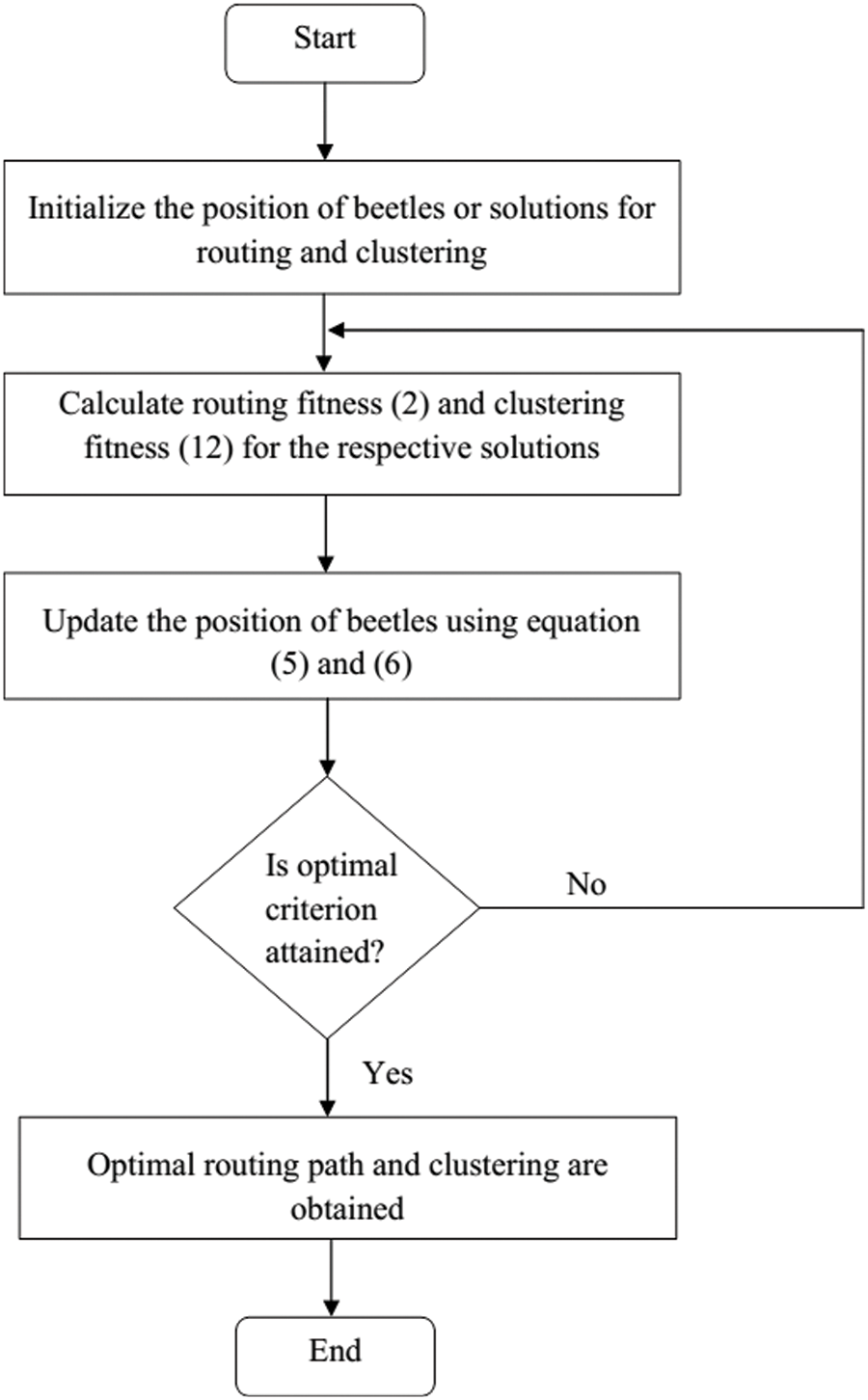
Figure 3: Flowchart of multi-objective BSO algorithm
The proposed scheme is executed in the platform of MATLAB. In this experimentation, 50 SNs are implemented in the region 50 m × 50 m. Each SN in the area is implemented along with 0.66 W transmission power and 0.395 W receiving power. Every SN has 250 m the transmission range. This work is done by using AODV routing protocol. Every sensor node is incorporated with omnidirectional antenna and radio wave power is being radiated consistently in all directions. Received signal power of every packet is being expected by two ray ground radio propagation model which is taken in consideration. Tab. 1 presents the various simulation parameters and value of suggested method. Here clustering and routing are performed using the proposed Beetle Swarm Optimization (BSO) algorithm.

Performance Analysis
The performance of the suggested clustering and routing scheme using BSO is calculated for delay, DR, throughput, energy consumption and network lifetime by ranging number of SNs. Besides, the performance of the BSO algorithm is juxtaposing with that of PSO and GWO algorithms. Fig. 4 presents the fair comparison in delay of numerous schemes for ranging number of SNs. As denoted in figure, delay increased in proportional to number of SN. However, delay of the suggested BSO based clustering and routing scheme is reduced to 21% and 37% respectively as compared with GWO and PSO. Due to efficient convergence speed and low computational complexity of BSO algorithm as compared to GWO and PSO, optimal clustering and routing have been done efficiently. There is reduction in transmission delay of the data packet by means of the efficient load balancing with the efficient clustering algorithm.

Figure 4: Delay and nodes index for the network
The comparison between DR of the suggested BSO and that of PSO and GWO is presented in Fig. 5. As the number of SN increases the delivery is lessened presented in the figure. However, due to selection of the optimal routing path using the proposed BSO, DR of the suggested modal is enhanced to 8% and 29% respectively as compared with GWO and PSO. Fig. 6 presents a fair comparative analysis of energy consumption of clustering and relative routing scheme for numerous optimization techniques. Due to the selection of optimal and adequate routing path and the balance of load among the gateways using the suggested clustering scheme, energy consumption of the suggested BSO is reduced to 6% and 33% respectively as compared with GWO and PSO.
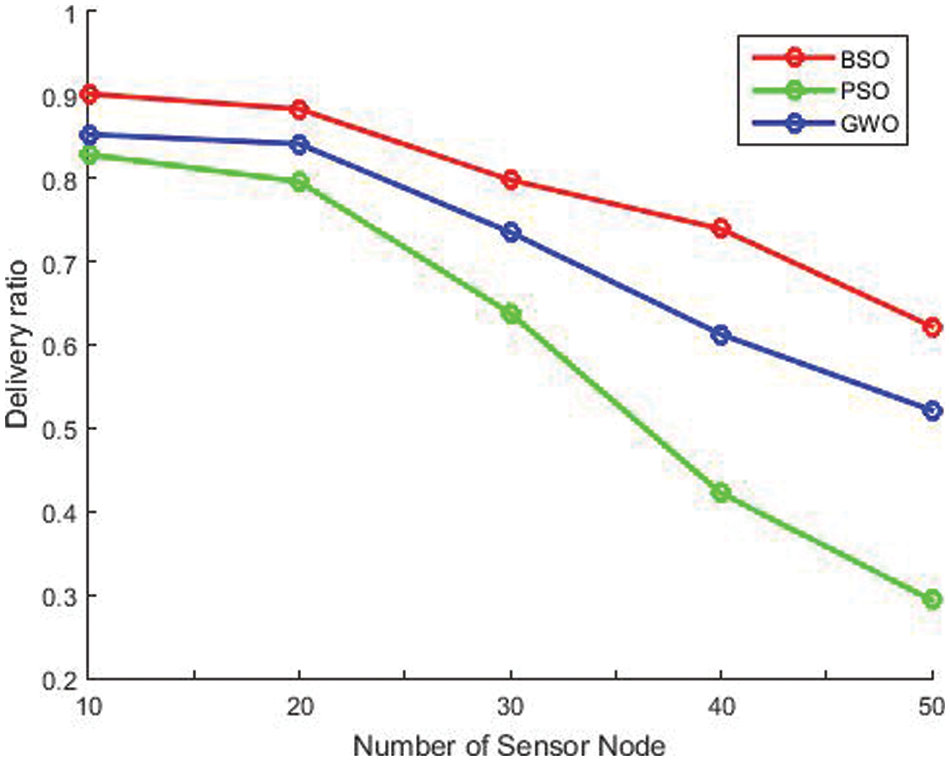
Figure 5: Delivery ratio (DR) and nodes index for the network

Figure 6: Energy consumption and nodes index for the network
Moreover the Fig. 7 presents the comparative analysis of throughput of the different schemes for ranging number of SNs. As indicated in the figure, throughput is lessened with increase in SNs. Howbeit, compared with clustering and routing scheme of GWO and PSO, throughput of the suggested BSO based routing scheme and clustering is enhanced to 72% and 61% respectively. As the BSO algorithm has good convergence speed, routing path between source and BS is selected optimally than the existing GWO and PSO. So, it leads to increase the throughput of the network.
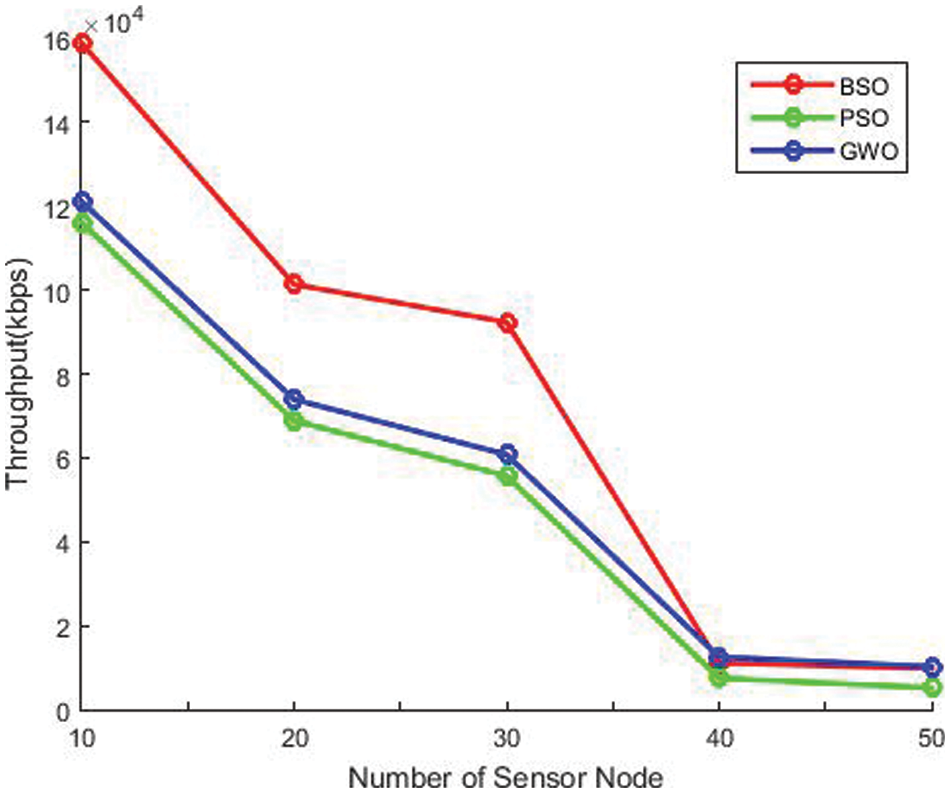
Figure 7: Throughput and nodes index for the network
The comparative analysis of throughput of the different schemes for ranging number of SNs is presented in Fig. 8. As indicated in the figure, network lifetime decreases with increase in SNs. Howbeit, network lifetime of suggested BSO based routing and clustering scheme is increased to 37% and 21% respectively as compared with GWO and PSO. Because of the load balancing among the gateways using the proposed BSO based clustering scheme, network lifetime increases.
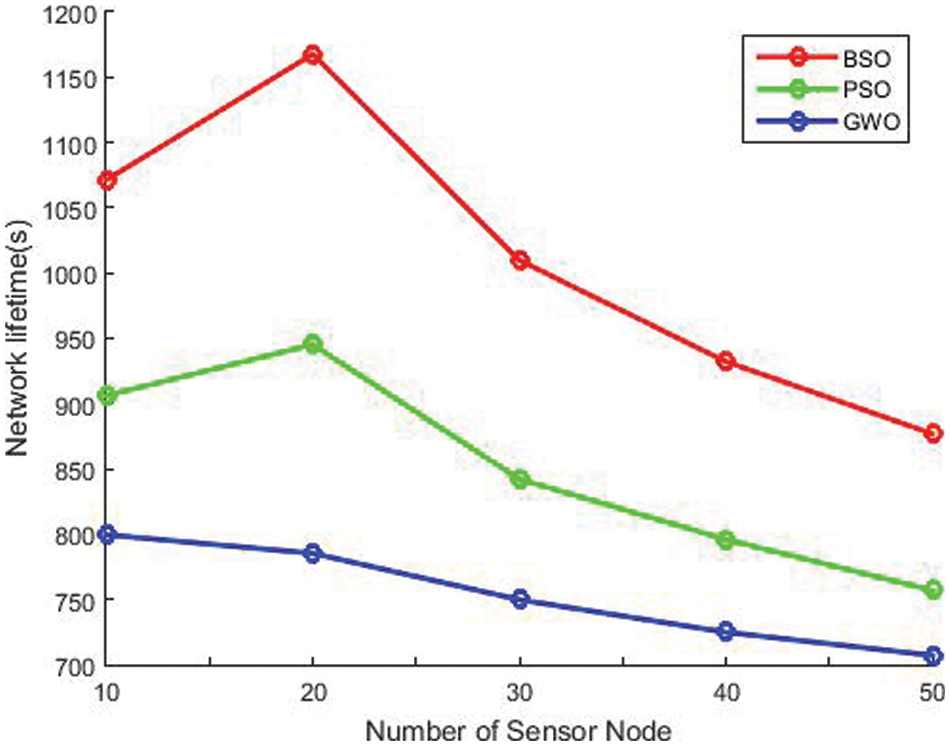
Figure 8: Network lifetime and nodes index for the network
The paper proposed a novel multi-objective engineering model for resolving the issue of heavy traffic load surrounding the gateway and network lifetime. The beetle swarm optimization (BSO) algorithm is deployed for solving this practical real life problem. BSO based clustering has helped in reducing the number of SNs allotted to gateway in the vicinity of BS and further more number of SNs to the gateway at a remote distance from BS. To enhance the energy efficiency and network lifetime of the study system, optimal routing path has been established between source and BS using the BSO algorithm. The proposed BSO based clustering and routing scheme has generated an inspirational results compared to some of the literature available technique such as PSO and GWO applied for similar kind of problems. Simulation results showed that the proposed scheme increased 72% of throughput and 32% of network lifetime than the existing schemes. In future such modal may be implemented on similar or different problem foe other optimization technique.
Acknowledgement: The authors with a deep sense of gratitude would thank the supervisor for his guidance and constant support rendered during this research.
Funding Statement: The authors received no specific funding for this study.
Conflicts of Interest: The authors declare that they have no conflicts of interest to report regarding the present study.
References
1. M. Sonthalia, A. Jha, U. Gupta and J. Thyagarajan, “A real time implementation of hierarchical routing protocol for IoT based wireless sensor network,” in 2019 Int. Conf. on Wireless Communications Signal Processing and Networking (WiSPNET), Chennai, India, IEEE, pp. 512–516, 2019. [Google Scholar]
2. M. K. Singh, S. I. Amin, S. A. Imam, V. K. Sachan and A. Choudhary, “A survey of wireless sensor network and its types,” in 2018 Int. Conf. on Advances in Computing, Communication Control and Networking (ICACCCN), Greater Noida, India, IEEE, pp. 326–330, 2018. [Google Scholar]
3. K. Maraiya, K. Kant and N. Gupta, “Application based study on wireless sensor network,” International Journal of Computer Applications, vol. 21, no. 8, pp. 9–15, 2011. [Google Scholar]
4. S. K. Haider, M. A. Jamshed, A. Jiang, H. Pervaiz and Q. Ni, “UAV-Assisted cluster-head selection mechanism for wireless sensor network applications,” in 2019 UK/China Emerging Technologies (UCET), Glasgow, UK, IEEE, pp. 1–2, 2019. [Google Scholar]
5. S. Kumar, N. Kumar and R. K. Saini, “Energy-saving sensors for precision agriculture in wireless sensor network: A review,” in 2019 Women Institute of Technology Conf. on Electrical and Computer Engineering (WITCON ECE), Dehradun, India, IEEE, pp. 65–70, 2019. [Google Scholar]
6. P. Kuila, S. K. Gupta and P. K. Jana, “A novel evolutionary approach for load balanced clustering problem for wireless sensor networks,” Swarm and Evolutionary Computation, vol. 12, pp. 48–56, 2013. [Google Scholar]
7. P. Kuila and P. K. Jana, “Energy efficient clustering and routing algorithms for wireless sensor networks: Particle swarm optimization approach,” Engineering Applications of Artificial Intelligence, vol. 33, pp. 127–140, 2014. [Google Scholar]
8. D. R. Edla, A. Lipare, R. Cheruku and V. Kuppili, “An efficient load balancing of gateways using improved shuffled frog leaping algorithm and novel fitness function for WSNs,” IEEE Sensors Journal, vol. 17, no. 20, pp. 6724–6733, 2017. [Google Scholar]
9. D. R. Edla, A. Lipare and R. Cheruku, “Shuffled complex evolution approach for load balancing of gateways in wireless sensor networks,” Wireless Personal Communications, vol. 98, no. 4, pp. 3455–3476, 2018. [Google Scholar]
10. R. E. Mohemed, A. I. Saleh, M. Abdelrazzak and A. S. Samra, “Energy-efficient routing protocols for solving energy hole problem in wireless sensor networks,” Computer Networks, vol. 114, pp. 51–66, 2017. [Google Scholar]
11. B. Sreevidya and M. Rajesh, “Enhanced energy optimized cluster based on demand routing protocol for wireless sensor networks,” in in 2017 Int. Conf. on Advances in Computing, Communications and Informatics (ICACCI), Udupi, India, IEEE, pp. 2016–2019, 2017. [Google Scholar]
12. B. Yin, S. W. Zhou, S. W. Zhang, K. Gu and F. Yu, “On efficient processing of continuous reverse skyline queries in wireless sensor networks,” KSII Transactions on Internet and Information Systems, vol. 11, no. 4, pp. 1931–1953, 2017. [Google Scholar]
13. J. M. Zhang, K. Yang, L. Y. Xiang, Y. S. Luo, B. Xiong et al., “A self-adaptive regression-based multivariate data compression scheme with error bound in wireless sensor networks,” International Journal of Distributed Sensor Networks, vol. 9, no. 3, pp. 913497, 2013. [Google Scholar]
14. J. Wang, C. Ju, Y. Gao, A. K. Sangaiah and G. J. Kim, “A PSO based energy efficient coverage control algorithm for wireless sensor networks,” Computers, Materials & Continua, vol. 56, no. 3, pp. 433–446, 2018. [Google Scholar]
15. J. Wang, X. J. Gu, W. Liu, A. K. Sangaiah and H. J. Kim, “An empower hamilton loop based data collection algorithm with mobile agent for WSNs,” Human-centric Computing and Information Sciences, vol. 9, no. 1, pp. 1–14, 2019. [Google Scholar]
16. J. Wang, Y. Gao, C. Zhou, S. Sherratt and L. Wang, “Optimal coverage multi-path scheduling scheme with multiple mobile sinks for WSNs,” Computers, Materials & Continua, vol. 62, no. 2, pp. 695–711, 2020. [Google Scholar]
17. J. Wang, Y. Gao, W. Liu, W. Wu and S. J. Lim, “An asynchronous clustering and mobile data gathering schema based on timer mechanism in wireless sensor networks,” Computers, Materials & Continua, vol. 58, no. 3, pp. 711–725, 2019. [Google Scholar]
18. Z. Liao, J. Wang, S. Zhang, J. Cao and G. Min, “Minimizing movement for target coverage and network connectivity in mobile sensor networks,” IEEE Transactions on Parallel and Distributed Systems, vol. 26, no. 7, pp. 1971–1983, 2014. [Google Scholar]
19. A. S. Raj and M. Chinnadurai, “Energy efficient routing algorithm in wireless body area networks for smart wearable patches,” Computer Communications, vol. 153, pp. 85–94, 2020. [Google Scholar]
20. R. Bhardwaj and D. Kumar, “MOFPL: Multi-objective fractional particle lion algorithm for the energy aware routing in the WSN,” Pervasive and Mobile Computing, vol. 58, pp. 101029, 2019. [Google Scholar]
21. F. Hidoussi, H. Toral-Cruz, D. E. Boubiche, R. Martínez-Peláez, P. Velarde-Alvarado et al., “PEAL: Power efficient and adaptive latency hierarchical routing protocol for cluster-based WSN,” Wireless Personal Communications, vol. 96, no. 4, pp. 4929–4945, 2017. [Google Scholar]
22. Y. Istwal and S. K. Verma, “Dual cluster head routing protocol with super node in WSN,” Wireless Personal Communications, vol. 104, no. 2, pp. 561–575, 2019. [Google Scholar]
23. N. A. Morsy, E. H. AbdelHay and S. S. Kishk, “Proposed energy efficient algorithm for clustering and routing in WSN,” Wireless Personal Communications, vol. 103, no. 3, pp. 2575–2598, 2018. [Google Scholar]
24. R. Yarinezhad and S. N. Hashemi, “Solving the load balanced clustering and routing problems in WSNs with an FPT-approximation algorithm and a grid structure,” Pervasive and Mobile Computing, vol. 58, pp. 101033, 2019. [Google Scholar]
25. Y. U. Xiu-wu, Y. U. Hao, L. Yong and X. Ren-rong, “A clustering routing algorithm based on wolf pack algorithm for heterogeneous wireless sensor networks,” Computer Networks, vol. 167, pp. 106994, 2020. [Google Scholar]
26. A. Lipare, D. R. Edla and V. Kuppili, “Energy efficient load balancing approach for avoiding energy hole problem in WSN using grey wolf optimizer with novel fitness function,” Applied Soft Computing, vol. 84, pp. 105706, 2019. [Google Scholar]
Cite This Article
 Copyright © 2023 The Author(s). Published by Tech Science Press.
Copyright © 2023 The Author(s). Published by Tech Science Press.This work is licensed under a Creative Commons Attribution 4.0 International License , which permits unrestricted use, distribution, and reproduction in any medium, provided the original work is properly cited.


 Submit a Paper
Submit a Paper Propose a Special lssue
Propose a Special lssue View Full Text
View Full Text Download PDF
Download PDF Downloads
Downloads
 Citation Tools
Citation Tools